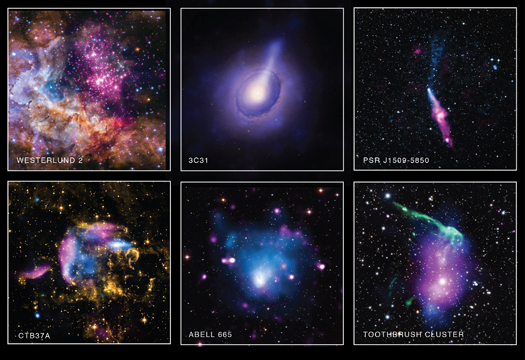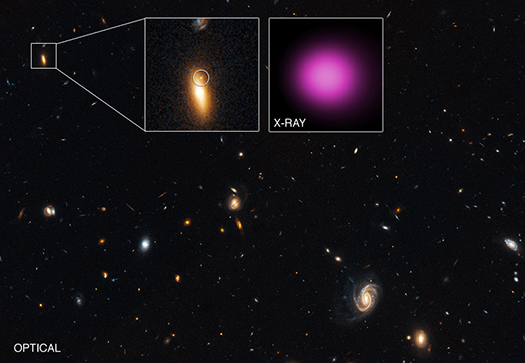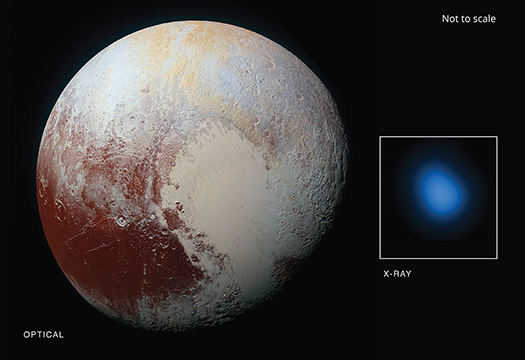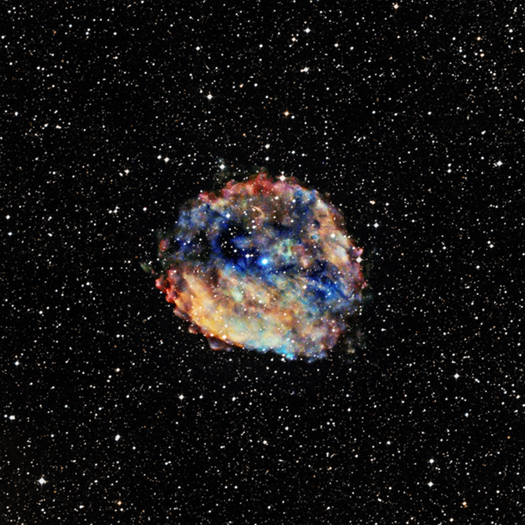Monster Flares in Otherwise Ordinary Extragalactic X-ray Binaries'

Jimmy Irwin
We are pleased to welcome Jimmy Irwin as our guest blogger today. Jimmy is the first author of a new Nature paper describing the detection of two mysterious, flaring X-ray sources in Chandra data. Irwin is an associate professor at the University of Alabama. After obtaining his PhD from the University of Virginia, he was a postdoc, a Chandra Fellow, and a research scientist at the University of Michigan. He studies the X-ray binary and hot gas content of galaxies, as well as the hot intracluster medium of groups and clusters of galaxies.
Projects don't always turn out the way one expects them to. Sometimes the result is uninteresting, but other times they far exceed expectations. Our project began as an undergraduate endeavor for two students looking to work on a project for college credit. A third student, who was a friend of one of the students, joined the project just for fun.
Discovering the Treasures in Chandra's Archives
Each year, NASA's Chandra X-ray Observatory helps celebrate American Archive Month by releasing a collection of images using X-ray data in its archive.
X-ray Telescopes Find Evidence for Wandering Black Hole
Astronomers have used NASA's Chandra X-ray Observatory and ESA's XMM-Newton X-ray observatory to discover an extremely luminous, variable X-ray source located outside the center of its parent galaxy. This peculiar object could be a wandering black hole that came from a small galaxy falling into a larger one.
Astronomers think that supermassive black holes, with some 100,000 to 10 billion times the Sun's mass, are in the centers of most galaxies. There is also evidence for the existence of so-called intermediate mass black holes, which have lower masses ranging between about 100 and 100,000 times that of the Sun.
2016: The Year of the Black Hole (1)
The 2016 Nobel Prize in physics will be announced in only 4 days, on Tuesday October 4th. Ronald Drever, Kip Thorne and Rainer Weiss, three founders of the detection of gravitational waves (2). They have already won multiple awards for this discovery including the Kavli Prize in Astrophysics, the Gruber Cosmology Prize, a Special Breakthrough Prize in Fundamental Physics and the Shaw Prize in Astronomy. (Kudos to those behind the Gruber Cosmology Prize and the Special Breakthrough Prize for explicitly naming the LIGO team in their awards, something the Nobel Prize award likely won’t do.)

Ronald Drever, Kip Thorne and Rainer Weiss (left to right). Credit: The Kavli Foundation.
Chandra Detects the First X-rays Coming From Our Kuiper Belt

Carey Lisse (left) and Ralph McNutt Jr. (right)
We are pleased to welcome a pair of distinguished guests to the Chandra blog. Carey Lisse is currently a principal staff scientist at Johns Hopkins University Applied Physics Laboratory (JHU-APL). He has used ACE, Chandra, EUVE, HST, ROSAT, Spitzer, and XMM-Newton as well as numerous ground based telescopes to study the physical properties of many Solar System objects. Ralph McNutt Jr. is a physicist also at JHU-APL. Among his many other positions, he serves as the co-investigator for the PEPSSI instrument aboard New Horizons. He also been the principal investigator on many other spacecraft and experiments designed to explore the Solar System and beyond. Lisse and McNutt are the 1st and 2nd authors of a paper that is the basis for our latest press release, about the surprising Chandra detection of Pluto.
Once the stuff of science fiction when we were kids, the fantastically successful NASA New Horizons mission's flyby of Pluto in July 2015 has transformed our understanding of Pluto from a point-like object into a fascinating world. It has also inspired a plethora of new observations of the system to take advantage of the once-in-a-lifetime flyby event. We ran one of these sets of observations using NASA's Chandra X-ray Observatory. Launched in 1999, Chandra is now one of the established premier observatories of our time - in fact it is one of NASA's four Great Observatories (along with the Hubble Space Telescope, Spitzer Space Telescope, and the Compton Gamma Ray Observatory ).
X-ray Detection Sheds New Light on Pluto
The first detection of Pluto in X-rays has been made using NASA's Chandra X-ray Observatory in conjunction with observations from NASA's New Horizon spacecraft. As reported in our press release this result offers new insight into the environment surrounding the largest and best-known object in the solar system's outermost regions.
Young Magnetar Likely the Slowest Pulsar Ever Detected
Using NASA's Chandra X-ray Observatory and other X-ray observatories, astronomers have found evidence for what is likely one of the most extreme pulsars, or rotating neutron stars, ever detected. The source exhibits properties of a highly magnetized neutron star, or magnetar, yet its deduced spin period is thousands of times longer than any pulsar ever observed.
Hunting For the Most Distant Galaxy Cluster

Tao Wang
We are pleased to welcome Dr. Tao Wang as a guest blogger. Tao is the first author of a paper that is the subject of our latest press release, about an extremely distant galaxy cluster. Tao is now a postdoc in CEA/Saclay, France, working with Dr. David Elbaz on high-redshift galaxies and galaxy clusters, and received a PhD in astrophysics from Nanjing University, China in 2012. During his PhD, he worked for two years in the Harvard-Smithsonian Center for Astrophysics and then worked as an associate researcher back in Nanjing University for one year before starting his postdoctoral work at CEA/Saclay in 2013.
Galaxy clusters are the largest known gravitationally bound structures in the universe and usually consist of hundreds of galaxies distributed in a relatively small area a few million light-years across. One of the most prominent features of clusters is the presence of a predominant population of massive, elliptical galaxies in the cluster core. These galaxies are among the most massive galaxies in the universe and are believed to have rapidly formed their stars a long time ago. However, how these galaxies formed and why have they stopped forming new stars remain mysteries. Solving these mysteries is essential to our understanding of both galaxy and cluster formation. To answer these questions, the key is to search for and study galaxy clusters (or their progenitors) in the early universe, right when they form.
Record-breaking Galaxy Cluster Discovered
This image contains the most distant galaxy cluster, a discovery made using data from NASA's Chandra X-ray Observatory and several other telescopes. The galaxy cluster, known as CL J1001+0220, is located about 11.1 billion light years from Earth and may have been caught right after birth, a brief, but important stage of cluster evolution never seen before.
Modeling, Mapping and Made with Code: Two Summer Internships at the Chandra Operations Control Center
We are very pleased to welcome two special guest contributors to the Chandra blog. Amy Nuccitelli and Jonathan Brande both spent the summer of 2016 working as interns with the Chandra X-ray Observatory team at its Operations Control Center. Amy Nuccitelli will enter her junior year as a mathematics major at James Madison University in Harrison, VA, while Jonathan is pursuing a major in astronomy and a minor in computer science at the University of Maryland, College Park. We thank Amy and Jonathan both for their hard work on the Chandra mission and also for taking the time to share their experiences with the Chandra bog.

Jonathan Brande and Amy Nuccitelli





